Microbiome
Biologist Tim Spector on the overall weight of our microbes, remembering our natural roots, and the importance...

On June 18, 2015, The Anthropocene Review published a paper “The Anthropocene biosphere” about the contribution of humans as a species to the history of life on Earth. We have asked one of the authors of this research, Prof. Mark Williams, to comment on this work.
Life on Earth has existed for an almost unimaginably long time. It is very ancient with a fossil record extending back nearly 3500 million years, and chemical evidence suggesting that Earth’s earliest biosphere may have evolved as long ago as 3800 million years. Viewed in this context a Cretaceous dinosaur living 70 million years ago – something we think of as very ancient, in fact lived in only the last 2% of the entire history of life on Earth.
Life presents an unbroken chain of evolution stretching back from the organisms living today – like humans, to the simplest prokaryotic cells living on Earth billions of years ago. Through all that time the biosphere has been innovative, changing and adapting the Earth around it. The first life on Earth existed in an atmosphere-ocean system without free oxygen. Then, about 2400 million years ago cells evolved the capacity for oxygenic photosynthesis, releasing free oxygen to the atmosphere and oceans. That free oxygen was a by-product, but one that poisoned those environments occupied by Earth’s earliest, anaerobic microorganisms: after one thousand million years of dominance they were pushed to the margins as the biosphere remade itself. This evolutionary innovation of the biosphere also changed the chemistry of the oceans and the style of weathering on land.
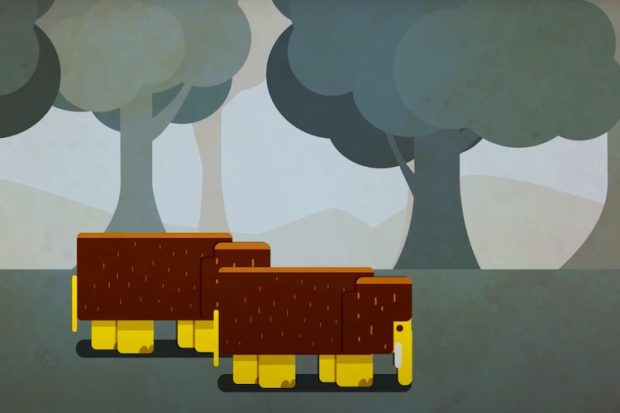
Later, the biosphere evolved cells with membrane-bound nuclei, sexual reproduction, multicellular structures, and between about 700 and 540 million years ago evolved 3-dimensional structures with differentiated tissues – animals, including those with a head and tail end that had directionality. These changes mark the boundary between the Precambrian world of microbes, and the last 540 million years of Earth history dominated by its complex animal ecosystems in the oceans, which then spread on to the land from about 460 million years ago. This wonderfully complex and resilient biosphere has persisted, give or take five mass extinction events, over 500 million years. That is, until now, when the world may be entering another period of radical change, possibly as significant as that marking the transition between the microbial and animal worlds. Humans are the agents of change here.
How can the human impact be quantified? Several authors have argued that human-induced fragmentation of ecosystems, pollution, and climate change might induce a sixth mass extinction. Yet extinction alone is not a unique feature of the modern biosphere. It has happened before, albeit not at the hands of a single species (in this case Homo sapiens). Certain components of the modern biosphere might, however, be seen as completely unique from an evolutionary perspective, as uniquely different as say an animal is to a microbe.
Humans have moved organisms around the planet, changing geographical patterns that have existed for millennia and restructuring ecosystems. Cats and rabbits are an obvious example of these transported, or ‘neobiotic’ species – though humans themselves are the neobiotic species par excellence, having invaded every continent from their origin point some 200,000 years ago in Africa. The most vivid examples of the huge impact of neobiota are from those regions of Earth that are geographically isolated. In New Zealand, for example, there are nearly as many human introduced species of plants as there are native species. Some of these introductions have become truly ‘invasive’, in that that the introduced species damage the ecosystems they invade, such as the notorious (and now widespread) Argentine Ant, or the Brown Tree Snake in Guam. These changing geographical patterns of flora and fauna are not unique in themselves. This has happened many times in the geological past without the influence of humans, for example when North and South America were joined through the Central American Isthmus some 3 million years ago, causing the ‘Great American (biotic) Interchange’. What is uniquely different about the present signature is the global nature of the neobiota.
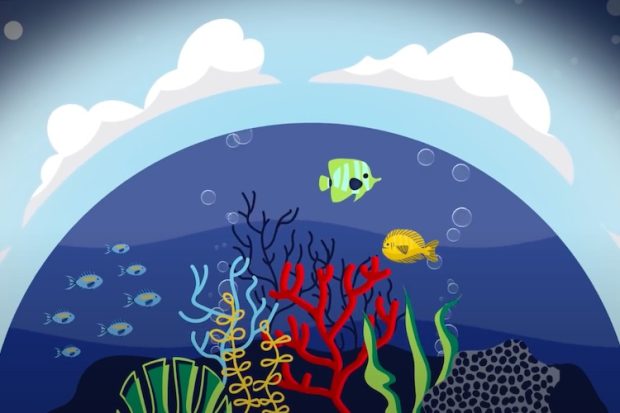
Humans also now dominate the food chain, both for marine and terrestrial components of the biosphere where they have displaced top predators like sharks and bears. This has never happened before in the history of life on Earth – with one species pre-eminent in marine and terrestrial spheres, and this is a unique feature of the Anthropocene biosphere, as is the human appropriation of something like one-quarter to perhaps over one third of all net primary production.
Humans have also significantly modified animal and plant traits over millennia, concentrating biomass into a few domesticated animals – cows, sheep, pigs, and horses for example. Human directed evolution is now evident at a basic everyday level, for example in anatomical changes to the broiler chickens we eat, increasing their individual biomass considerably in the span of only half a century of human intervention. Or, is visible in the ability of humans to directly alter the genetic materials of organisms. And, human technology is now intimately connected to the biosphere, so that it at once sustains the biosphere – and the seven billion members of one species – humans, through technological innovations such as the Haber-Bosch process, but technology is itself dependent on the biosphere to sustain it.
And then there is the technosphere, a concept of Peter Haff at Duke University. The technosphere may represent the most fundamentally unique component of the evolving Anthropocene biosphere, a globally emergent system that includes humans, technological artefacts and the associated social and technological networks that support this. It could be viewed as an entity emerging from the Anthropocene biosphere, though at present the biosphere and the technosphere have mutual dependence.
This state shift in the biosphere has been evolving over millennia. Its origins may lie millions of years ago, with the first primates that picked up tools to use as devices for manipulating woodlands and savannah during the Pliocene. The process has accelerated since humans and their immediate ancestors evolved ever more sophisticated mechanisms of manipulating their environment, culminating in the development of agriculture more than 10,000 years ago, and accelerating through the processes of industrialization over the past 300 years.
We have been thinking about the effect of humans on various aspects of the Earth System as part of the Anthropocene Working Group, a body within the International Commission on Stratigraphy that is examining the geological signature of humans. The concept of humans as agents of geological change dates back to the nineteenth century, but more recently was given new life by Nobel Prize winning scientist Paul Crutzen and his colleague Eugene Stoermer in an influential research paper from 2000. They proposed to designate a geological epoch characterised by the global impact of humans on ecology and geology, just as say a geologist might recognise the Jurassic as a time characterised by particular ammonites and dinosaurs.
The Anthropocene biosphere is one component of the human-induced change to planet Earth, and that change will leave a very distinctive fossil record, not least in the rapidly changed bone anatomy of the broiler chickens we eat in the early twenty-first century, compared to their recent ancestors in the 1950s. But it will express itself in myriad other biological changes. The neobiota, for example, will leave a distinctive fossil signal, of the animals and plants transported from one continental region to another. It is important to measure the degree of this change by looking at past events in the biosphere’s evolution.
In the end also, the biosphere is what sustains the human species, and examining its potential trajectory is very important for the survival of Homo sapiens.
We’ve argued that there are several possible trajectories for the human experiment with the biosphere, and these range from collapse to sustainability. If humans and the technosphere use up the Earth’s resources too fast, then it is possible that the Anthropocene biosphere will collapse and become a short-lived evolutionary experiment, one survived by a much reduced (or perhaps no) human component, and with a considerably degraded biodiversity. In this scenario the biosphere would regenerate its diversity after several million years, following the route that it has in the past, though with geographical and evolutionary patterns that had been reset by the human influence.
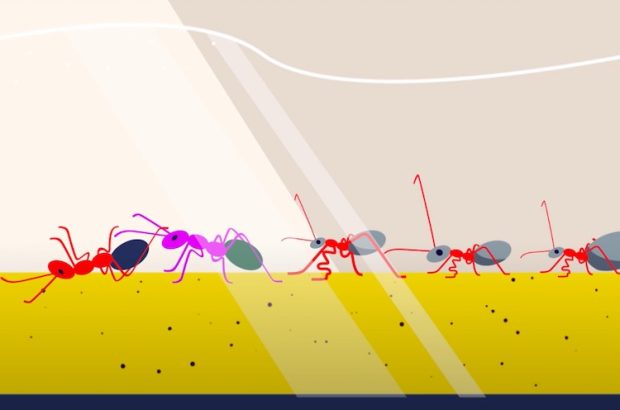
Alternatively, humans may learn to manage the biological diversity around them more as stewards than pillagers, and develop political and societal frameworks in which the biosphere can be properly managed and sustained. In such a scenario the interaction between the biosphere and the technosphere might accelerate, become further intertwined, and essentially evolve a symbiotic relationship. In that scenario the biosphere will have fundamentally changed, and such a change might last over geological timescales. The biosphere would have remade itself again.
How these processes might unfold is an area of active research. Geologists in particular can examine past major events in biosphere evolution. For example, the five mass extinction events of the past 500 million years show how resilient the biosphere can be, and how the Earth recovers. That might tell us something about our future path. It tells us the biosphere can and will recover, but the timescales are over millions of years, and therefore it might not recover in the ‘shelf life’ of our species.
One could neatly summarise this in the effect of humans on corals in the oceans. Corals are threatened by global warming, decreasing ocean alkalinity and by pollution. Some predictions suggest that coral reefs may struggle to build their skeletons around the middle of the twenty-first century. Coral reef systems are bastions of ocean species-diversity, but they have gone extinct before, most notably about 250 million years ago during a great environmental crisis at the Permian-Triassic boundary. If humans cause such a catastrophe in the Anthropocene biosphere, then the geological lessons are clear.
Although the changes to the biosphere (and other components of the Earth system) wrought by humans are already substantial, thinking through these problems from a geological perspective might help us design better ways to deal with the environmental impact. Geologists (scientists) can’t do this alone. They need to become trans-disciplinary and work with their colleagues in the social sciences and politics to influence this supranational debate.
Geologists have a lot to offer in the current debate about human-induced environmental change. Their time-travelling skills may be important in mapping out near future biosphere change scenarios. And there they can help influence the political and societal dialogue on how best to preserve the wonderful biodiversity that is still at the heart of the Anthropocene biosphere.
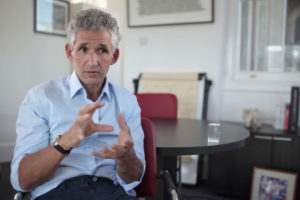
Biologist Tim Spector on the overall weight of our microbes, remembering our natural roots, and the importance...

Researchers find a likely suspect for the neural substrate of subjective happiness
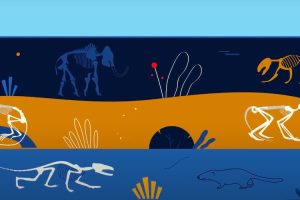
Research team discovered that 35 million years ago the ancestors of hippos were among the first large mammals ...